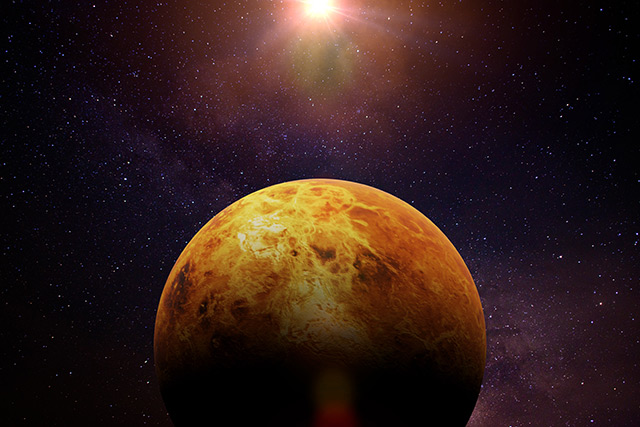
The cloudy planet dubbed the "Morning Star" and "Evening Star" could be harboring alien life. A NASA-backed international study surmises that there could be simple but sturdy bacteria floating in the uppermost clouds of Venus, reported The Sun.
Study author Sanjay Limaye of the University of Wisconsin-Madison says that computer models of Venus suggest it used to be a habitable planet in the distant past. Some of those models even theorize that its life-bearing period lasted as long as two billion years, much longer than what is currently ascribed to Mars.
His co-author, David J. Smith of NASA's Ames Research Center, adds that living terrestrial bacteria have been discovered at high altitudes in Earth's atmosphere. Other microorganisms survive and even thrive in Yellowstone's sulfuric hot springs, hydro-thermal vents at the bottom of the sea, highly-polluted regions, and acidic lakes. (Related: Beyond oxygen: Looking for possible alien life that may not require an atmosphere with oxygen.)
"On Earth, we know that life can thrive in very acidic conditions, can feed on carbon dioxide, and produce sulfuric acid," remarks co-author Rakesh Mogul, who teaches biological chemistry at California State Polytechnic University, Pomona. Coincidentally, the aforementioned gas and acid happen to comprise much of the Venusian atmosphere.
Limaye and his co-authors published their study in the journal Astrobiology.
Mysterious dark patches in Venusian clouds may be atmospheric bacterial blooms
Limaye got the idea about microbes living in Venus' upper atmosphere after talking with co-author Grzegorz S?owik from the University of Zielona Góra at a workshop. S?owik is the one who brought up the existence of terrestrial bacteria that could absorb light.
It so happens that the clouds of Venus often display dark patches of unknown origin. First seen by ground-based telescopes nearly a century ago, these mysterious patches merited the attention of space probes sent to the planet in later years. Spectroscope analysis determined that the patches are made up of concentrated sulfuric acid as well as mysterious particles that can absorb light.
"Venus shows some episodic dark, sulfuric rich patches, with contrasts up to 30–40 percent in the ultraviolet, and muted in longer wavelengths. These patches persist for days, changing their shape and contrasts continuously and appear to be scale dependent," reports Limaye.
The strange particles in the patches are around the same size as some terrestrial bacteria. If they are organic in origin, Limaye and Mogul believe the patches develop in much the same way as the algal blooms in Earth's water, which take place whenever there is a massive influx of nutrients.
Future missions to Venus can determine presence of alien life
Earlier probes did not have the correct sensors to determine if the mysterious light-absorbing particles were organic or inorganic in nature. Taking a new batch of atmospheric samples is a must for any new mission to Venus.
NASA is designing the Venus Atmospheric Maneuverable Platform (VAMP) for future missions to Earth's neighboring planet. Combining the best features of aircraft and blimps, VAMP can stay up among the clouds for a year.
According to Limaye, VAMP will mount a plethora of scientific instruments to study Venus. In addition to chemical detectors, LIDAR (Light Detection and Ranging), spectrometers, and weather sensors, the aerial probe could also field a microscope that can recognize living microorganisms in atmospheric samples.
"To really know, we need to go there and sample the clouds. Venus could be an exciting new chapter in astrobiology exploration," Mogul believes.
NASA is also engaged in talks with its Russian counterpart ROSCOSMOS to join the Venera-D mission in 2026. If negotiations are successful, NASA could contribute a surface station and an aerial platform like VAMP to the Venus mission.
Follow the hunt for extraterrestrial life at Space.news.
Sources include:
Please contact us for more information.



















